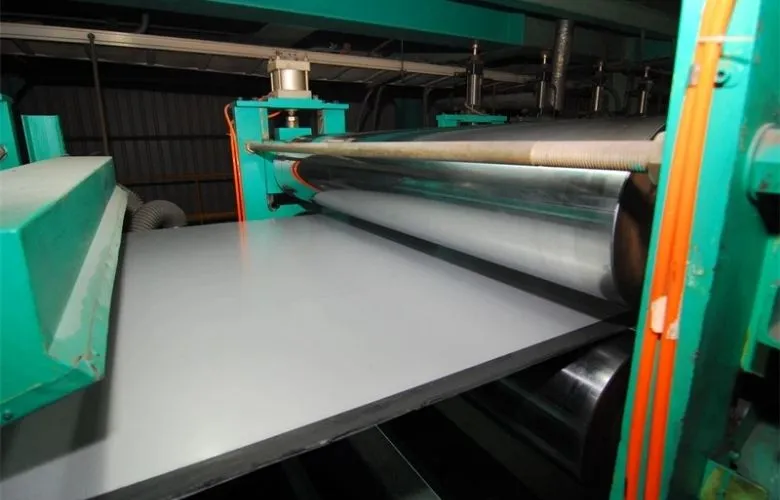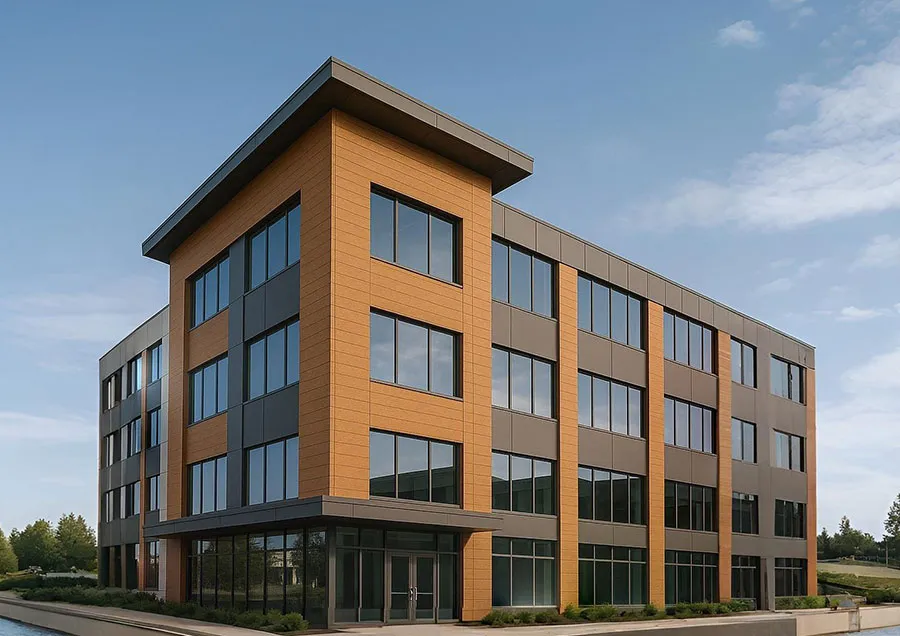Exploring the Manufacturing Process of Aluminum Composite Panels

Aluminum composite panels or popularly called ACP sheets are one of the finest decorative elements for building facades and interiors. ACP sheet has provided a new identity to architecture in terms of design, innovation, and durability. Nowadays, whether you look at the uniquely designed facade of a skyscraper or the mind-blowing interiors of a residential project, there is the use of ACP sheets for achieving such architectural marvels.
But have you ever wondered how these panels are manufactured in a factory? In this blog, we will sneak into the manufacturing process of aluminum composite panels and understand their journey from scratch.
How Aluminium Composite Panels Are Made?
Step 1: Preparing The Raw Material
The first step includes melting the core raw material polyethylene plastic or commonly known as the fire-rated core. The melting process is executed through heat extrusion in 10 to 15 different sectors to ensure that the plastic 100% melts. The heating compartments have filters just next to them for cleansing the melted plastic and removing impurities for the liquified core.
Now, the liquified plastic is compressed by rollers. A 5-roller system and a 3-roller system are two commonly used methods for the compression of the plastic core. However, the requirement of rollers can vary according to the thickness of ACP panels. However, most of the renowned industries are implementing 5 roller systems for achieving smooth and durable panels.
Step 2: Cleansing Of Aluminium Coil
Aluminum composite panels have a sandwich-like structure where the polyethylene core is wrapped between slim layers of aluminum. Before compositing, the aluminum coils need to go through a vital cleansing process to avoid the presence of impurities such as grease, dirt, and debris. The cleansing process has three sub-steps that include
1. Degreasing: Degreasing is one of the most important techniques to remove the oil layer from the surface of aluminum coil. The coils are left in an antioxidant solution for some time. Through which the layer of grease and dirt accumulated on them gets removed.
2. Chromatization of Aluminum: After degreasing and lubricating the aluminum coil, it is time for chromatization of its surface. The aluminum is passed through a series of tanks to have an even film of chrome over its surface. In the next step, these coils are compressed to form aluminum panels.
3. Application of Carbon Coating: After the impurities are removed, carbon powder coating is applied to the aluminum panels. This is done so that no one has any allergic reactions due to the panels.
Step 3: Fabrication And Compression
It is the step where aluminum composite sheets get their identity. In this step, the polyethene core is sandwiched between aluminum panels by using high-pressure compressors.
The fabrication of aluminum over polyethylene is a thermally exogenous process. That means heat is produced during this process at a very high temperature due to pressure. Therefore, aluminum composite panels are immediately ejected into a rapid cooling process just after compression. Immediate cooling helps to stabilise the aluminum over the polyethylene core and provides durability to ACP sheets.
Step 4: Adding The Protective Layer
In the fourth step, aluminum composite panels are coated with a thin protective layer that provides them with enhanced durability. The thin film makes the panels resistant to scratches and stains. Therefore, ACP sheets can resist tough situations and extreme weather conditions. Furthermore, the protective layer makes the panels easy to clean and maintain. Here are some of the other major benefits of adding a protective covering,
- The protective layer shields the ACP panels from scratches, stains, and weathering.
- It provides a barrier against UV rays and moisture.
- It preserves the original finish and colour of the ACP.
- Certain protective coatings can enhance the fire resistance of ACP panels.
Step 5: Customization Of ACP Sheets
In the final stage of ACP sheet manufacturing, customization takes centre stage to meet specific design requirements. Surface treatments such as matte, glossy, or brushed finishes are applied to enhance visual aesthetics and tactile appeal. Furthermore, there is a vast array of colour options that ensures seamless integration with architectural designs or corporate branding.
Step 6: Quality Control And Inspection
Rigorous quality control and inspection protocols are implemented to ensure the highest standards of product excellence. Every batch of ACP sheets undergoes thorough testing to verify structural integrity. Quality control measures include dimensional accuracy assessments and visual inspections for defects or imperfections. Using a thorough inspection process manufacturers uphold their commitment to delivering ACP panels that meet or exceed industry standards.
Conclusion
In summary, the manufacturing process of aluminum composite panels is as beautiful as their appearance. Undoubtedly, the unique manufacturing process of aluminum composite panels is the reason behind their durability and aesthetics. Hopefully, you have enjoyed this journey. Stay tuned with us for more such insights.

Leading ACP Sheet Manufacturer
As a proud representative of Alumina ACP, a premier manufacturer of Aluminum Composite Panels, I bring a wealth of expertise in acp sheets and addressing diverse architectural needs with innovative solutions. Join me on this journey of exploration and discovery!
